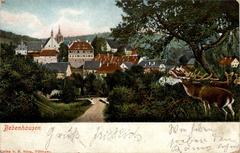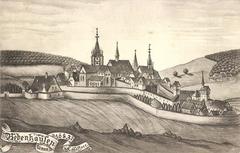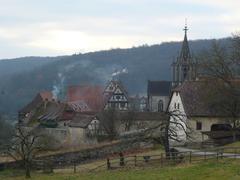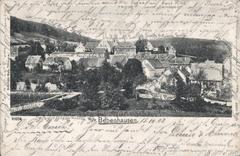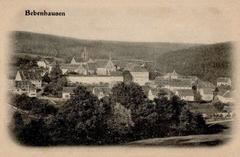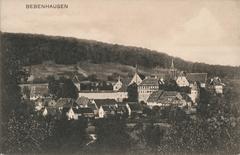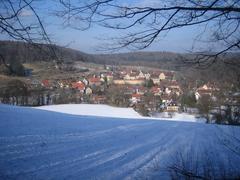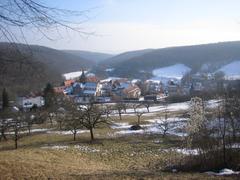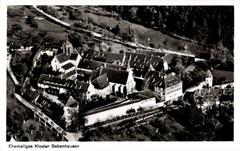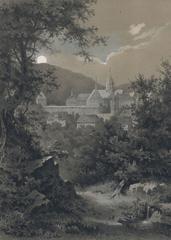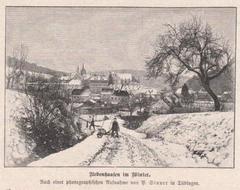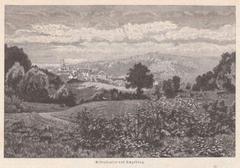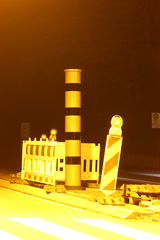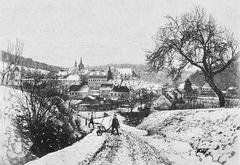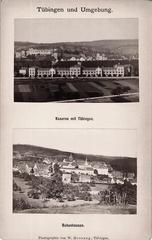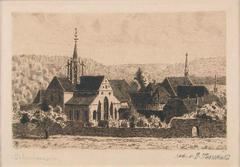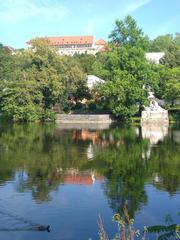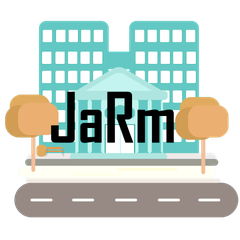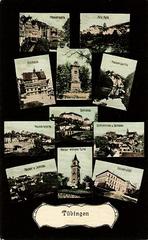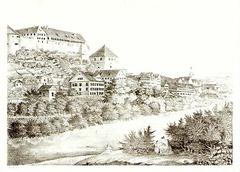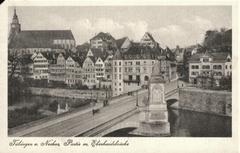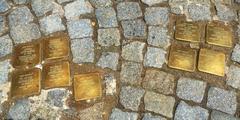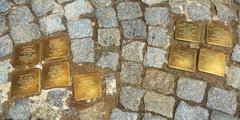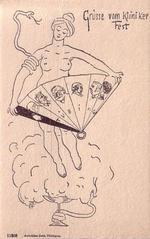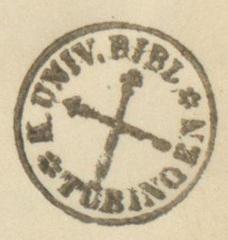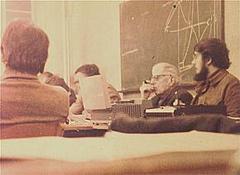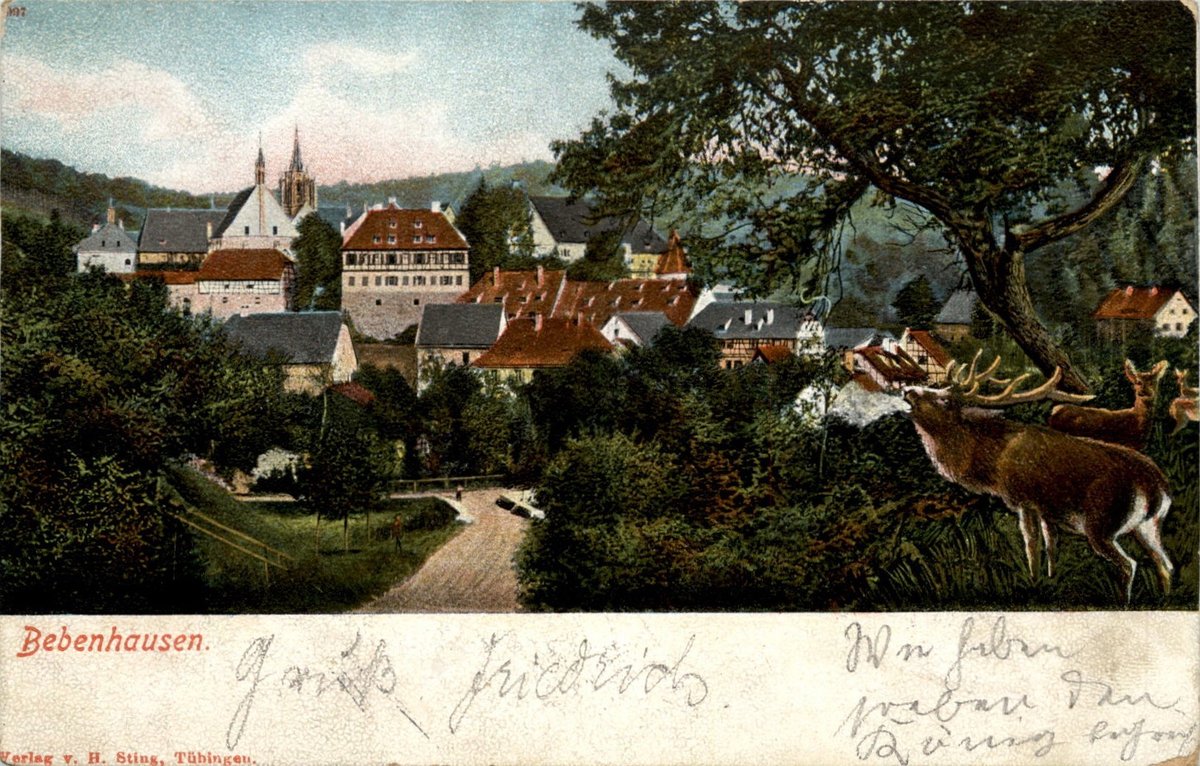
Bebenhausen Monastery and Palace: Comprehensive Visiting Guide
Date: 14/06/2025
Introduction
Situated within the serene Schönbuch Nature Park, Bebenhausen Monastery and Palace stands as one of Tübingen’s most significant historical and architectural landmarks. Founded in the late 12th century as a Cistercian monastery, Bebenhausen has transitioned through monastic, royal, and political phases, each leaving its mark on the site’s unique character. Today, visitors encounter a harmonious blend of medieval spirituality, royal tradition, and natural beauty, making Bebenhausen an essential destination for history lovers, families, and travelers alike (placesofgermany.de; visit-tubingen.co.uk; kloster-bebenhausen.de; tourismus-bw.de).
This guide compiles everything you need to plan your visit: historical context, cultural significance, ticketing, visiting hours, accessibility, travel tips, and recommendations for nearby attractions.
Historical Overview
Foundations and Medieval Growth
Bebenhausen was established in 1187 as a Cistercian monastery, reflecting the order’s focus on simplicity, self-sufficiency, and agricultural innovation. Located in the Schönbuch forest for its seclusion and resources, the abbey soon became a regional powerhouse, with up to 80 monks and 130 lay brothers managing vast lands and contributing to the area’s prosperity. The triple ring wall and the roof turret of the abbey church are among the original features still dominating the landscape (placesofgermany.de; tuebingen.de).
Reformation, Secularization, and Royal Residence
The Protestant Reformation reached Bebenhausen in the 16th century. Duke Ulrich of Württemberg introduced Lutheranism, transforming the monastery into a Protestant monastic school. The site continued its educational mission until the 19th century, when Napoleonic secularization led to its conversion into a royal hunting lodge for the kings of Württemberg. King Wilhelm II and Queen Charlotte later made Bebenhausen their residence in exile, and today, their personal artifacts and furnishings remain on display (placesofgermany.de; tuebingen.de).
Modern Significance
After World War II, Bebenhausen served as the seat of the state assembly of Württemberg-Hohenzollern (1946–1952), further cementing its political importance. Today, Bebenhausen is one of Germany’s best-preserved medieval monastic complexes, protected as a historic monument and functioning as a museum and cultural venue (visit-tubingen.co.uk; kloster-bebenhausen.de).
Architectural Highlights
Monastic and Gothic Features
The abbey church, cloisters, chapter house, and summer refectory illustrate the Cistercian ideals of simplicity and harmony with nature. Gothic elements—such as ribbed vaults, pointed arches, and star-vaulted ceilings—create an atmosphere of serene austerity. The cloister, with its tranquil arcades and carved capitals, remains the spiritual heart of the complex (kloster-bebenhausen.de; en.wikipedia.org).
Royal Palace and Museum
The royal hunting lodge and palace, developed from the former abbot’s residence, blend medieval structure with 19th-century renovations. The palace interiors—accessible only via guided tour—feature period furnishings, hunting memorabilia, and the remarkably preserved palace kitchen. Museum exhibits cover the site’s evolution from monastery to royal residence and postwar parliamentary seat (kloster-bebenhausen.de; spottinghistory.com).
Visitor Information
Opening Hours
- April to October: Tuesday–Sunday, 10:00–17:00
- November to March: Tuesday–Sunday, 10:00–16:00
- Closed Mondays (except public holidays)
- Palace and Kitchen: Open from May 1 to November 1; closed during winter except for special tours (kloster-bebenhausen.de).
Tickets & Booking
- Adults: €7–€9
- Reduced (students, seniors): €5–€7
- Children under 6: Free
- Family/group rates available
- Guided tours (required for palace interiors) may have additional charges
- Schlosscard: Valid for entry to Bebenhausen and other Baden-Württemberg monuments
Buy tickets at the entrance or book online via the official site.
Accessibility
Most outdoor areas are wheelchair-accessible, though some historic interiors have limited access due to stairs or uneven floors. Contact the visitor center for detailed information.
Guided Tours & Events
- Guided tours: Available in German and English; advance booking recommended
- Special events: Classical concerts, seasonal festivals, historical reenactments, and themed tours throughout the year (kloster-bebenhausen.de).
Getting There & Facilities
- By Public Transport: Regular buses connect Tübingen’s main station to Bebenhausen (approx. 15 minutes; €2.30 fare) (Lonely Planet).
- By Car: Parking is available near the monastery, though limited during peak periods.
- Cycling/Hiking: Scenic trails through the Schönbuch forest lead directly to the site.
On-site amenities include a visitor center, restrooms, ticket office, café, and a small shop. The attached café offers homemade cakes and light meals, with local Swabian specialties available (The Tourist Checklist). For more substantial dining, the nearby Waldhorn restaurant is recommended (Fodor’s).
Main Attractions
- Abbey Church: Gothic architecture, medieval stonework, and tranquil atmosphere.
- Cloister: Peaceful arcades, star-vaulted ceilings, and medieval artistry.
- Summer Refectory: Restored frescoes depicting biblical scenes and monastic life.
- Palace Interiors: Royal apartments, preserved kitchen, and historical exhibitions.
- Gardens & Village: Picturesque landscaped grounds and half-timbered houses.
Naturpark Schönbuch and Outdoor Activities
Adjacent to the monastery, Schönbuch Nature Park offers 560+ kilometers of hiking and cycling trails, wildlife observation, and picnic areas. Combining a cultural visit to Bebenhausen with outdoor exploration is highly recommended (Lonely Planet).
Nearby Attractions
- Schloss Hohentübingen: 16th-century castle with panoramic views and the Museum Alte Kulturen.
- Tübingen Altstadt: Historic old town with half-timbered houses and vibrant squares.
- Stiftskirche St Georg: Late-Gothic church with ducal tombs and stained glass.
- Neckar River Promenade: Ideal for leisurely walks and boat rides.
Practical Tips
- Advance Booking: Recommended for guided tours, especially in English and during peak season.
- Weather: Prepare for variable conditions; wear comfortable shoes for uneven surfaces.
- Language: Some signage is in German; audio guides or translation apps enhance the experience.
- Duration: Allocate at least 2–3 hours for a complete visit.
- Photography: Allowed in gardens and exteriors; restrictions apply inside church and palace—check with staff.
Frequently Asked Questions (FAQ)
Q: What are Bebenhausen’s visiting hours?
A: Open Tuesday–Sunday, 10:00–17:00 (April–October) and 10:00–16:00 (November–March). Closed Mondays except public holidays.
Q: How do I buy tickets?
A: At the entrance or online via the official site.
Q: Is the site accessible for visitors with disabilities?
A: Most outdoor areas are accessible; some interiors have stairs or uneven floors. Contact the visitor center for details.
Q: Are guided tours offered in English?
A: Yes, but advance booking is advised.
Q: Can I take photos inside?
A: Allowed in outdoor areas; restrictions may apply indoors—always check with staff.
Visuals and Interactive Media
- Virtual tour of Kloster Bebenhausen
- Interactive map and high-quality images are available on the official website.
Internal Links
Conclusion and Recommendations
Bebenhausen is a living testament to the layered history of southwestern Germany. Its well-preserved monastery, royal palace, and tranquil setting within Schönbuch Nature Park offer a multifaceted visitor experience—spanning architecture, history, and outdoor recreation. With clearly posted visiting hours, a range of ticketing options, accessible facilities, and frequent cultural events, Bebenhausen remains a highlight for anyone exploring Tübingen and the Neckar valley.
For up-to-date information, tickets, and event schedules, consult the official website or Tourismus BW. Enhance your visit with the Audiala app for guided tours, translations, and exclusive content. Bebenhausen awaits as a timeless gateway to the region’s rich heritage and natural beauty.
